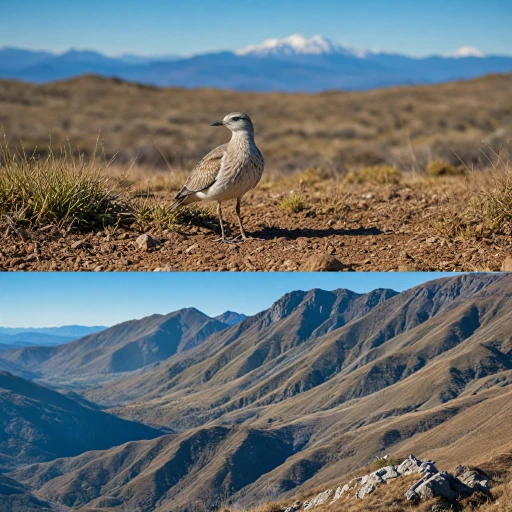Understanding Memory Card Storage
Grasping the Basics of Memory Card Storage
Understanding how a memory card works is crucial for photographers looking to maximize the space available for their images. Memory cards, like the popular 16GB models, serve as vital storage media for digital cameras, offering varying capacities to store numerous photos and files.
Primarily, a memory card’s storage potential hinges upon its capacity, or the "gigabytes" (GB) it’s capable of holding. For instance, a 16GB card might seem ample for storing a large number of photos, but factors such as file format and picture quality can significantly influence this.
Memory cards serve not only cameras but also various digital devices, acting as portable storage solutions similar to USB drives. They can store images in several file formats, including JPEG and RAW, each affecting file size differently. While JPEG format images consume less space, RAW images preserve higher quality at the cost of larger file sizes.
Photographers often face the challenge of balancing image resolution and overall quality with the available storage. Higher resolution photos and those saved in RAW format require more space. This trade-off between image quality and storage capacity makes it essential to choose the right memory card size.
Many users might consider upgrading to a 32GB card for more storage without sacrificing quality. To delve deeper into this topic, you can explore an insightful discussion on the capacity of a 32GB SD card for photos:
Understanding the Capacity of a 32GB SD Card for Photos. This will guide you in effectively managing your photo storage needs.
Factors Affecting Photo Storage Capacity
Influencing Elements for Photo Storage on Memory Cards
When assessing how many photos a memory card can hold, several factors come into play, and understanding these can aid in efficient photography planning and gear management. A vital aspect is knowing that the number of photos your card can hold isn't solely about its gigabyte size; instead, multiple elements influence this capacity.
Firstly, the
file size of each photo is essential. High-quality images tend to consume more space. Whether your camera captures images in
jpeg format or
raw format will significantly impact storage. JPEG files, being compressed, are smaller, while RAW files are uncompressed and larger, preserving more image detail, which leads to a substantial difference in file sizes.
Another critical factor is the
image resolution. Higher resolution correlates with larger file sizes, as it delivers more detail, catering to the demands of professional photography. While high-resolution images guarantee better quality, they also demand more space on your memory card.
Photographic quality settings in your camera play another role. Cameras often provide options to adjust image quality, directly affecting file size. High-quality settings enhance image clarity but will allow fewer photos on the same memory card.
Lastly, consider the
camera's capability and settings. Advanced cameras might have extensive options influencing image file setup, subsequently impacting how many photos the card can store.
Those conscious of storage limitations can explore various options or calculate requirements based on
understanding the capacity. With proper knowledge, one can make informed decisions about card purchases and camera settings.
JPEG vs. RAW: Impact on Storage
Influence of JPEG and RAW Formats on Memory
When considering how many pictures a memory card can actually hold, it's essential to recognize the impact of file formats on storage capacity. Typically, digital cameras offer two primary image file formats: JPEG and RAW. Both formats have their unique advantages and considerations when it comes to memory usage.
JPEG, or Joint Photographic Experts Group, is the more common format due to its efficient compression. This means JPEG files are significantly smaller, allowing your memory card to store many photos. However, despite their smaller size, JPEGs can slightly compromise image quality. Still, given their efficient use of space, they remain a favorite choice for casual photographers and those prioritizing convenience.
On the other hand, RAW files offer the highest possible quality image but come with a trade-off in terms of memory usage. These files retain all the data captured by the camera sensor, resulting in larger file sizes. While this ensures you capture every detail and offers greater flexibility in post-processing, it means a card can hold fewer images compared to JPEGs of equivalent resolution.
Understanding these differences can assist you in making informed decisions about which format suits your needs. For those serious about photography and looking to enhance their setup, consider exploring tools that optimize your shooting experience, such as enhancing your photography setup with a versatile light stand crossbar.
Resolution and Image Quality Considerations
Examining the Link Between Image Quality and Storage Needs
When considering how many pictures a digital camera's memory card can store, the resolution of the images plays a vital role. Image resolution refers to the detail an image holds and is usually measured in megapixels. The higher the resolution, the sharper and more detailed the photo, leading to larger file sizes.
High image resolution means higher quality outcomes but requires more space on your card. If you're capturing photos in their full glory, you should expect fewer photos stored as the file size per image is considerably larger. This is especially true if you're shooting in formats like RAW, which retain more image information and, as a result, consume more storage space.
- JPEG vs. RAW: While JPEG images are compressed, making the file size smaller, they compromise on some picture details. RAW formats, on the other hand, keep more data, making their size substantially larger.
- Resolution Impact: For instance, a camera set to 24 megapixels in RAW may yield files exceeding 30MB each, compared to just 5-10MB per image in JPEG. This influences how many photos your card can ultimately store.
- Quality vs. Quantity: It’s a trade-off between quality and quantity—higher quality images reduce the number of photos memory cards can accommodate.
Understanding these nuances can significantly impact your photography practices. Regularly assessing how different resolutions and file formats create differences in storage capacity helps optimize your use of camera memory and any additional USB drives you may utilize.Estimating Photo Storage: Practical Examples
Calculating the Number of Images Your Card Can Store
To determine how many pictures a 16GB memory card can hold, you need to consider a few variables. The relationship between the card's storage capacity and the file sizes of the images plays a crucial role. Here's a practical guide to help you estimate:- File Format Impact: If you're shooting in JPEG format, you can expect the card to store more images compared to RAW format. JPEGs are compressed files and take up less space, thus allowing more images to fit on the card. RAW format, on the other hand, retains all image data and therefore results in larger file sizes.
- Image Resolution and Quality: A higher image resolution and quality setting on your camera will produce larger files. For example, a 24-megapixel camera with high-quality settings results in larger file sizes than a 12-megapixel camera using standard quality settings.
- Practical Estimation: On average, a 16GB card can store approximately 4,800 JPEG images at a resolution of 12 megapixels with standard quality settings. For someone using RAW format at a higher resolution, that number might drop to around 500-800 images. It's essential to adjust your calculations based on your specific camera settings and usage habits.
While these guides provide a base understanding, actual usage can vary depending on additional factors such as the complexity of the image and any additional settings your camera might apply to the photos. Keeping a few scenarios in mind should provide a realistic approximation of how many pictures your card can hold, allowing for optimal planning and usage during photography sessions.Maximizing Your Memory Card's Potential
Efficient Use of Your Memory Card's Storage Space
Maximizing the potential of your memory card depends on several practical measures. Identifying the optimal combination of image quality and file size can ensure you store many photos without compromising too much on detail. Here's how to make the most out of your card's storage capacity:
- Evaluate Your Shooting Needs: Before selecting a file format, consider the shooting context. If the photos are for professional use, the RAW format might be ideal despite its larger file sizes due to its superior image quality. For everyday photography, JPEG format could be more efficient, holding more images at acceptable quality.
- Adjust Image Resolution: Setting your camera to capture images at a lower resolution can significantly increase the number of pictures your card can hold. This is especially useful for photos meant for digital use where high resolutions might not be necessary.
- Select the Right Card Size: When planning for a long trip or an extensive shoot, opting for a larger memory card can prevent the stress of running out of space. Balancing memory size with the number of photos you plan to store ensures you make informed decisions.
- Utilize Card Management Tools: Keeping track of your memory card's storage can be streamlined using tools that help monitor remaining space and organize files efficiently. Regular transfers to a USB drive or cloud service also help free up space.
- Erase Unnecessary Files: Periodically review and delete unwanted photos stored on the card. This practice not only maximizes space but also helps maintain easy access to important images.
While these steps can help you maximize your card's potential, staying aware of the factors affecting storage (such as file size, image resolution, and file format) remains essential to fully leverage the benefits of your memory card. By carefully considering these aspects, you'll ensure that you have room for 'many pictures' without unnecessary worry while out in the field.

